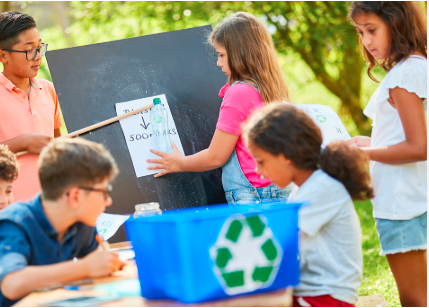Project-based learning (PBL) is reshaping classrooms across the world by focusing on real-world challenges, collaboration, and creative problem-solving. Instead of memorizing facts for a test, students in PBL environments engage in meaningful projects that connect deeply with the world around them. But to truly benefit from this dynamic approach, learners need the right strategies. Here’s how students can thrive in project-based learning in 2025.
Understand the Purpose Behind the Project
Every project in a PBL setting is designed with intention. It’s not just about creating a final product—it’s about exploring a problem, asking critical questions, and demonstrating learning in a tangible way. Thriving in this environment begins with understanding the “why” behind the project. Take time to connect the project’s goals to your personal interests or broader societal issues. When you see relevance, motivation often follows.
Start with a Strong Plan
Effective project work requires good planning. Break the assignment into manageable steps, create a timeline, and set clear goals for each stage. Whether you’re working alone or in a group, having a roadmap helps prevent last-minute stress and keeps your work on track.
Embrace Teamwork and Communication
PBL often involves collaboration. Being a good team member means listening actively, sharing ideas respectfully, and helping others succeed. If you’re leading a group, focus on creating an inclusive environment where everyone’s strengths shine. Clear communication—both written and verbal—helps avoid misunderstandings and improves group outcomes.
Be Curious and Ask Questions
Project-based learning encourages inquiry. Don’t be afraid to ask big or complex questions about your topic. The more curious you are, the more your project will evolve. If something seems unclear, reach out to your teacher or conduct your own research. Curiosity leads to richer learning experiences and deeper understanding.
Reflect Regularly on Your Progress
Reflection is a key part of project-based learning. Take time to think about what’s going well, what could be improved, and what you’re learning throughout the process. Keeping a project journal or recording weekly video reflections can help track your growth and show how your thinking develops over time.
Use Feedback as Fuel for Growth
Feedback in PBL isn’t just about fixing mistakes—it’s a chance to improve and grow. Be open to suggestions from your peers and teacher. Use that input to refine your work, explore new angles, or push your ideas further. The best projects are often shaped through revision.
Celebrate the Learning, Not Just the Outcome
While it’s exciting to present a polished final product, the real value of project-based learning lies in the journey. Celebrate the skills you’ve built, the problems you’ve solved, and the questions you’ve explored. These experiences prepare you for success beyond the classroom.
Conclusion
Project-based learning gives students a powerful way to engage with ideas, apply knowledge in meaningful contexts, and develop essential life skills. By staying organized, embracing collaboration, asking thoughtful questions, and reflecting on your journey, you’ll not only thrive in PBL—you’ll grow into a confident, curious learner ready to take on any challenge the future brings.














